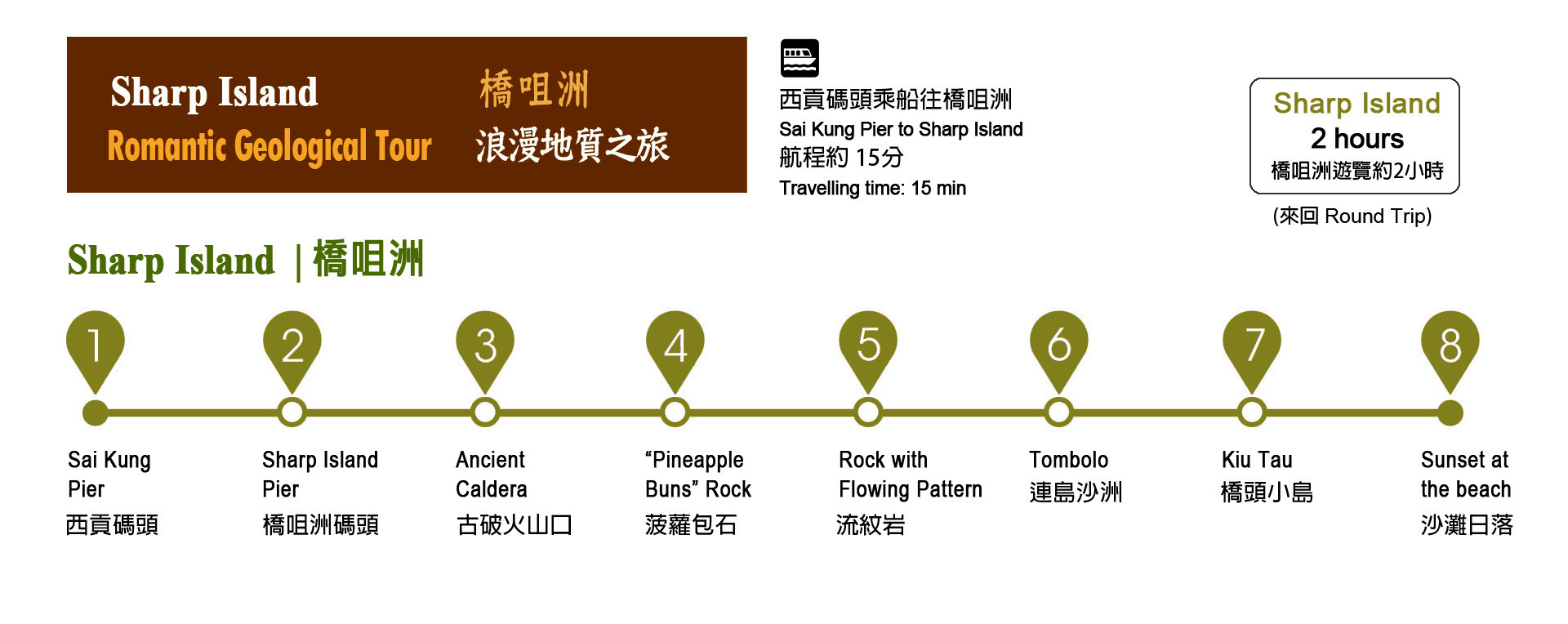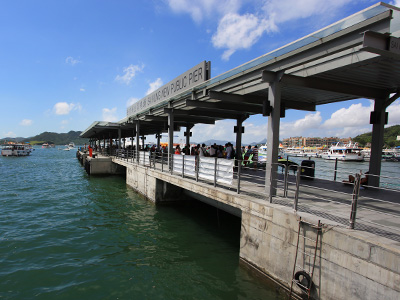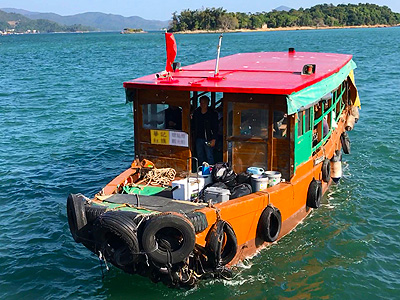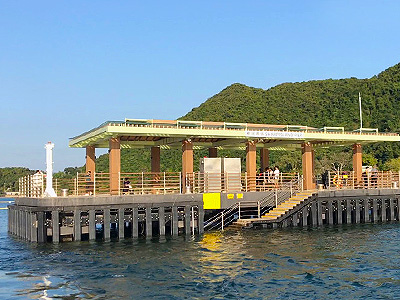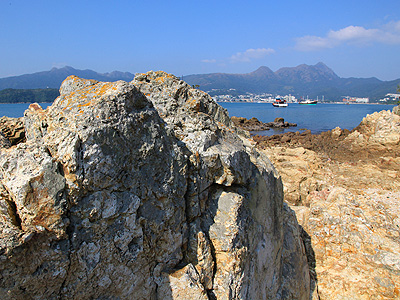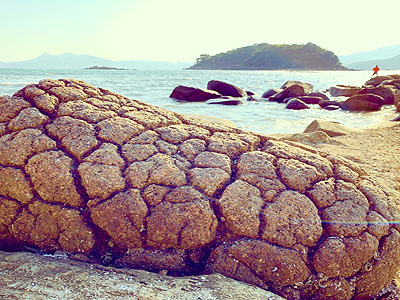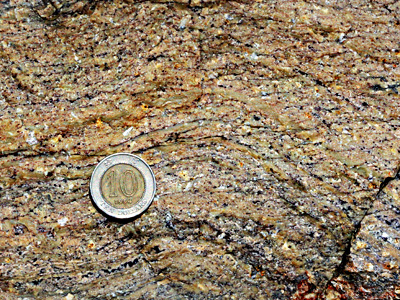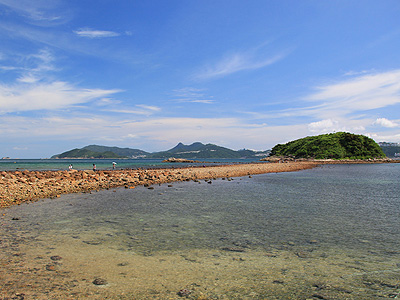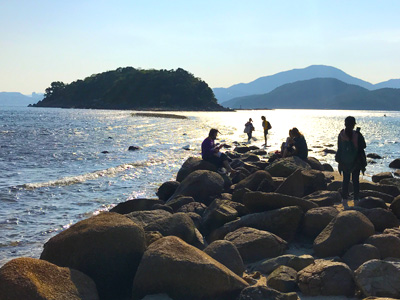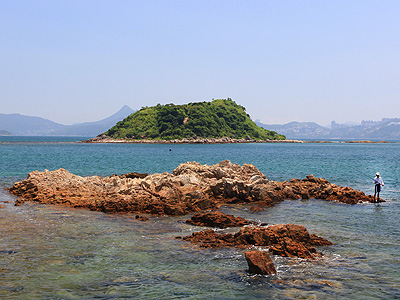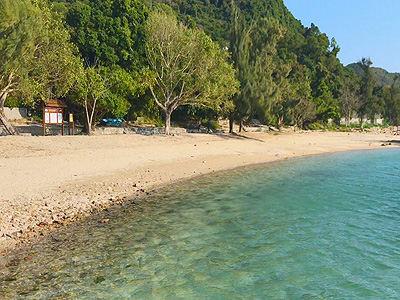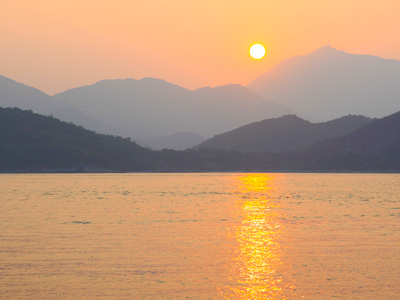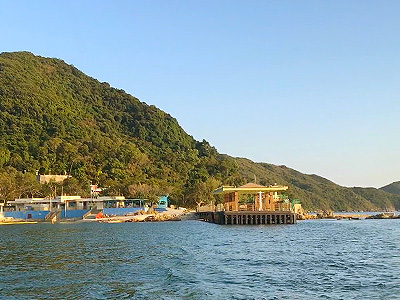
Sharp Island
Fairy Path (Half-day course)
Sharp Island is one of the most easily accessible geopark attractions. About 15
minutes from Sai Kung town centre by boat, it is a lovely
island of great natural beauty and geoheritage. The Sharp Island Geo Trail begins at the beach
and stretches across a tombolo, ending at the opposite
islet, called Kiu Tau. The “pineapple rocks” there are superstars of Hong Kong Geopark. They
were once ordinary granite boulders, which were sculpted
into their present appearance by weathering processes and wave erosion. With their reticulate
crack on the surface, they bear a striking resemblance to
the pineapple bun, a local delicacy well-loved by locals and tourists alike.
The tombolo is the famous landmark on Sharp Island. This 200m natural sand levee is made up of
sediments transported and deposited by wind and waves.
It appears above water only at low tide. To see it, check the tidal information published by the
Hong Kong Observatory beforehand and plan your trip
for a time when the tide is below 1.4m. When in Sai Kung, don’t miss Sharp Island. Enjoy the sea
breeze and lovely sunshine on the beach and the tombolo.
What better way to spend a leisurely day than exploring this idyllic spot!
Dozens of quartz monzonite boulders are scattered on the beaches of the Sharp Island tombolo.
Weathered and eroded to different degrees, they have “pineapple bun” -like cracks and are one of the biggest attractions on Sharp Island. Different degrees of
thermal expansion and contraction of the outer and inner layers of the monzonite
boulders have resulted in cracks between the layers, so that the outer layers peel off like
onion skin, a process known as “exfoliation”. Thermal expansion and contraction
have also caused reticulate cracks, which have expanded and deepened over time under sustained
weathering and erosion, eventually separating the rock surface into small irregular blocks.
Rhyolite is an acidic extrusive rock formed by solidification of cooled granitic magma
extruded upon the ground surface. It is so named for the iconic flowing lines.
Observed under a microscope, you can often find rhyolitic and porphyritic vitreous
properties, pellets, felstone and micrographic textures. In most cases,
distribution of rhyolite formed by lava flow is limited, as this type of rock is usually
outpoured by relatively small volcanic domes and lava flows. Hong Kong is
no exception. Apart from Sharp Island, similar flow-banded lava can only be found in Yim Tin
Tsai. The rhyolite lava of Sharp Island is living record of ancient
volcanic eruptions and lava flows.





